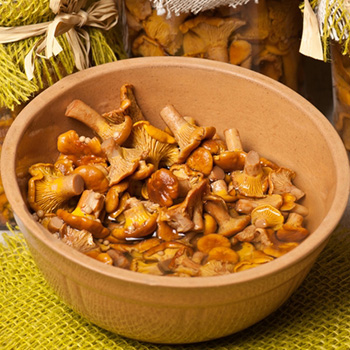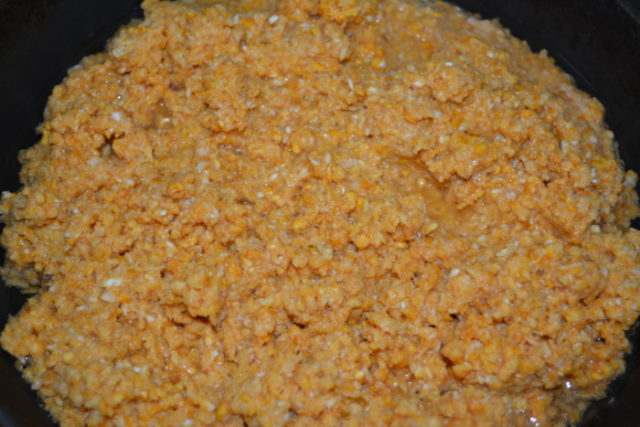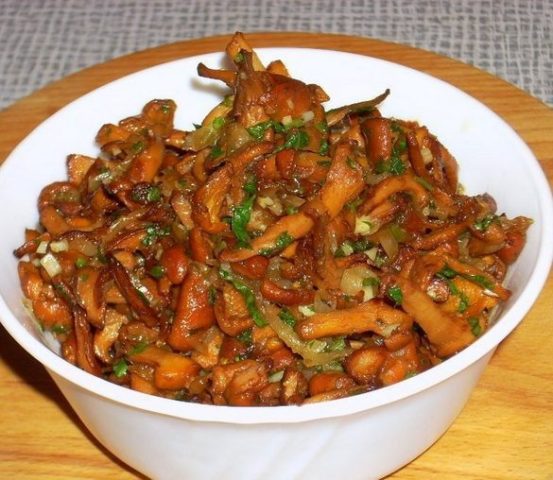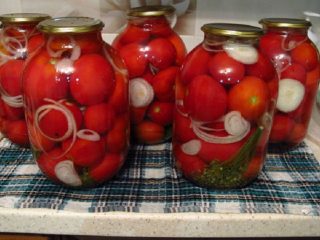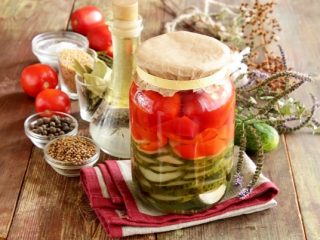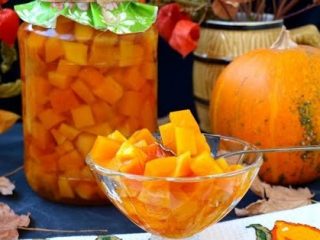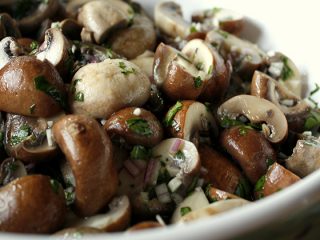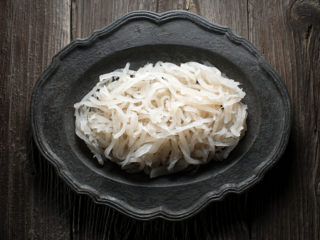Content
Canned and pickled mushrooms in Russia have always been the main decoration of the festive table. Chanterelles are especially loved by the people - both for their attractive coloring, and for their seductive taste, and because worms avoid them, and mushrooms are surprisingly easy and pleasant to collect. And lovers of oriental cuisine will certainly appreciate the recipe for Korean chanterelles. After all, it combines all the amazing properties of pickled mushrooms and the piquancy of Korean cooking.
Features of cooking chanterelle mushrooms in Korean
Usually, when making pickled chanterelles, they are either boiled in a marinade, or already cooked mushrooms are poured with freshly prepared brine and vinegar. The main feature of this recipe is that the dish can even be called a salad with chanterelle mushrooms in Korean. Not only do the ingredients contain vegetables, they are also prepared in a special way before being mixed with mushrooms and other ingredients.
To preserve prepared Korean-style snacks for the winter, sterilization is required, that is, heating the finished dish in a water bath, followed by hermetically sealed sealing.
But, as the experience of some housewives shows, the finished dish can be simply frozen directly in jars.And in winter, after defrosting under normal conditions at room temperature, no one will distinguish it by taste from freshly cooked.
Ingredients
To prepare Korean chanterelles for the winter you will need:
- 3.5 kg of already boiled chanterelles;
- 500 g carrots;
- 1 kg of onion;
- 2-3 heads of garlic;
- 2 hot chilies;
- 200 ml 9% vinegar;
- 300 ml vegetable oil;
- 8 tsp. salt;
- 8 tbsp. l. granulated sugar;
- 2 tbsp. l. ground coriander;
- 30 g of ready-made seasoning for Korean carrots.
Korean chanterelle recipe
To cook chanterelles in Korean, you must follow the instructions:
- First of all, boil the chanterelles for 15-20 minutes in salted water.
- Throw them into a colander, lightly squeeze out excess moisture and weigh the resulting amount to calculate how much other ingredients need to be added in proportion.
- Then they are crushed using any method: with a sharp knife, through a meat grinder or a food processor.
- Carrots are washed, peeled and chopped using a special grater in the form of a long straw.Advice! It is most convenient to use a grater for Korean carrots.
- Mix grated carrots and mushrooms in a deep bowl.
- Add spices, coriander, salt and sugar. Grind all the ingredients well together and, covering with a lid, set aside to soak each other in juices.
- Peel the onions, wash them, finely chop them into cubes or thin half rings.
- Heat the entire amount of vegetable oil in a deep frying pan and fry the onion in it over medium heat until golden brown.
- Transfer it to a common container with chanterelles and carrots.
- Hot peppers are washed, removed from seeds and cut into thin strips.
- The garlic is peeled and crushed using a press.
- Add pepper and garlic to the rest of the ingredients and mix everything well.
- Vinegar is added last.
- After stirring, place the resulting mixture into small half-liter jars. They must be previously sterilized.
- Covering with sterile lids, place the jars in a wide saucepan with water for sterilization. It is better to place a thick cloth or wooden stand at the bottom of the pan to avoid the jars bursting.
- After the water boils in the pan, heat the workpiece for a quarter of an hour.
- When hot, the jars are sealed, turned upside down and cooled under a towel.
- When turned upside down, they should not leak and there should be no streams or bubbles rising to the top. This may indicate that the screw is not tight. In this case, the jars must be sealed with new lids.
- After cooling, the Korean chanterelles are stored.
There is another variation of the Korean chanterelle recipe, in which more attention is paid to frying all the components, which gives the dish additional flavor nuances.
You will need:
- 0.5 kg chanterelles;
- 2 onions;
- 3 cloves of garlic;
- 1 pinch of ground chili pepper;
- 50 g vegetable oil;
- 4 tbsp. l. soy sauce;
- 1 tbsp. l. 9% vinegar;
- 1 tsp. Sahara;
- greens to taste and desire.
Preparation:
- Heat vegetable oil in a frying pan along with finely chopped pieces of chili pepper.
- Chanterelles are washed and cut into small pieces.
- Chop the onion finely using a sharp knife.
- Add the chanterelles and onions to the pan and fry over moderate heat until all the liquid is released.
- Sugar is dissolved in soy sauce, vinegar and crushed garlic are added.
- Pour this sauce over the contents of the pan and simmer for 10-12 minutes until cooked.
- Place in jars and sterilize in a water bath for a quarter of an hour. Then it is hermetically sealed.
- Or cool, transfer to freezer bags and place in the freezer for winter storage.
Calorie content
If the calorie content of fresh chanterelles is only 20 kcal per 100 g of product, then for the described Korean snack it increases mainly due to the vegetable oil content. On average, it is about 86 kcal per 100 g of product, which is about 4% of the daily value.
The nutritional value of the snack is presented in the table:
| Proteins, g | Fats, g | Carbohydrates, g |
Contents per 100 g of product | 1,41 | 5,83 | 7,69 |
Terms and conditions of storage
A snack created according to such an interesting recipe can be stored even indoors without access to light (for example, in a kitchen cabinet), thanks to sterilization. But in this case, it is advisable to consume Korean chanterelles within 6 months.
When placed in cool, dark conditions, such as a basement, cellar or refrigerator, the snack will easily keep for 1 year or more. But it’s better to use it before the new chanterelle harvest.
Conclusion
The Korean chanterelle recipe is amazing in its ease of preparation. Only sterilization can become a stumbling block for novice housewives. But the dish turns out beautiful, tasty, and healthy. Fans of spicy oriental cuisine will definitely appreciate it.
